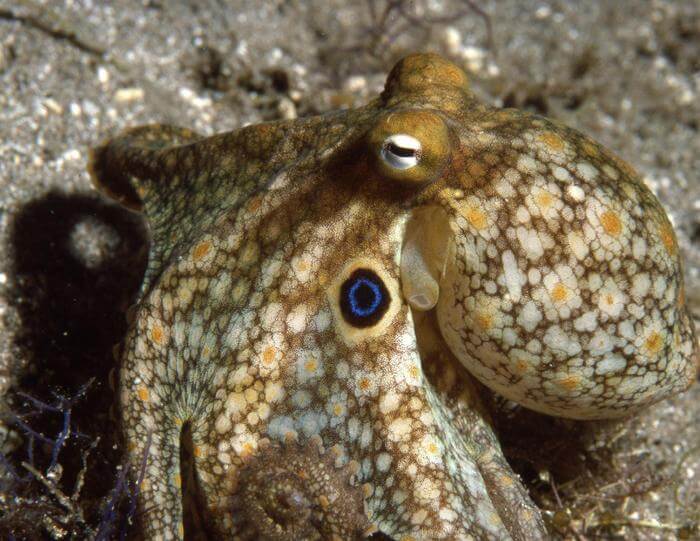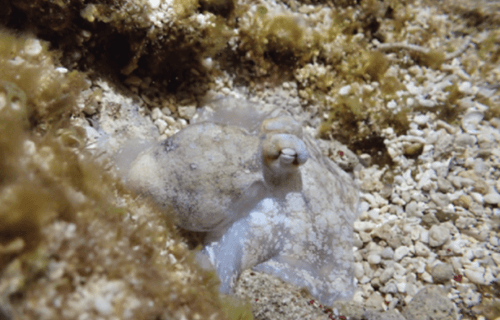OKINAWA, Japan — Octopuses have remarkably similar sleep patterns to humans – and may even dream just like us, according to a new study. Researchers in Japan have discovered that these eight-limbed sea creatures, like humans, cycle between two sleep stages – a tranquil “quiet” stage and a vibrant “active” stage reminiscent of mammals’ Rapid Eye Movement (REM) sleep.
During sleep, octopuses’ calm periods are interrupted by brief episodes of intense activity, marked by twitching arms and eyes, accelerated breathing, and flashing skin colors, leading scientists to speculate that they might be dreaming.
Scientists from Japan’s Okinawa Institute of Science and Technology (OIST) and the University of Washington studied the brain activity and skin patterning of octopuses (Octopus laqueus) during their active sleep phase. They found that these patterns “closely resemble” the neural activity and skin behavior exhibited when the creatures are awake. Similar wake-like activity occurs during mammals’ REM sleep, the stage when most dreams happen.
The findings emphasize the surprising parallels between the sleep behaviors of octopuses and humans.
“All animals seem to show some form of sleep, even simple animals like jellyfish and fruit flies. But for a long time, only vertebrates were known to cycle between two different sleep stages,” says Professor Sam Reiter, the study’s senior author from OIST, in a university release.
To validate their hypothesis, the scientists conducted an experiment to ascertain whether the octopuses were truly asleep during the active phase. Both quiet and active sleep stages required stronger physical stimuli to provoke a reaction than when the octopuses were awake.
“The fact that two-stage sleep has independently evolved in distantly related creatures, like octopuses, which have large but completely different brain structures from vertebrates, suggests that possessing an active, wake-like stage may be a general feature of complex cognition,” adds Dr. Leenoy Meshulam, one of the study’s authors.
Further experiments revealed that when the octopuses’ sleep was interrupted, or if they were prevented from sleeping, they entered active sleep sooner and more often.
“This compensatory behavior nails down the active stage as being an essential stage of sleep that is needed for octopuses to properly function,” comments Aditi Pophale, the study’s co-first author and a Ph.D. student at OIST.
The researchers also investigated the octopuses’ brain activity while awake and asleep. They observed brain waves during quiet sleep that closely resemble sleep spindles, certain waveforms seen during non-REM sleep in mammals, which scientists believe aid in consolidating memories. The research team also analyzed the octopuses’ changing skin patterns during wakefulness and sleep in ultra-high 8K resolution.
“By filming in such high resolution, we can see how each individual pigmented cell behaves in order to create an overall skin pattern. This could help us create simple skin pattern models to understand the general principles of waking and sleeping patterning behavior,” says Dr. Meshulam.

While awake, octopuses use their skin patterns to blend in with their surroundings, ward off predators, and communicate with each other. The scientists found that the octopuses cycled through the same skin patterns during active sleep.
The team postulated several theories to explain the similarities between active sleep and awake states, including the possibility of octopuses practicing or maintaining their skin patterns, or perhaps even re-living and learning from their waking experiences – something akin to dreaming.
“In this sense, while humans can verbally report what kind of dreams they had only once they wake, the octopuses’ skin pattern acts as a visual readout of their brain activity during sleep,” says Prof. Reiter. “We currently don’t know which of these explanations, if any, could be correct. We are very interested in investigating further.”
The findings are published in the journal Nature.
You might also be interested in:
- Octopuses caught on camera throwing junk at each other during underwater fights
- Cure for nightmares? Scientists say sound therapy could help reduce bad dreams
- What do octopuses think about? Scientists are finally seeing their mysterious brain waves
South West News Service writer Stephen Beech contributed to this report.


Could dreaming be part of consciousness?